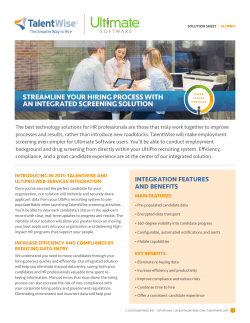
Function Analysis - Kilbride Consulting, Inc.
How do I use it? Function Analysis Identify the issue or problem for which ideas are needed and explore it as a group. What is it? A method used to generate alternative ways to accomplish a function or purpose. This method helps you step back from the current approach for a process, product, or structure, and consider the purpose or function served by key elements within it. Doing so can create new possibilities for accomplishing these same purposes in dramatically different ways. Some possible uses: Design of a… To clarify the function, Then purpose, or value of… generate… Process Individual steps in a process flow. Product Components or parts of a product. Organization Departments, units, or groups. Alternative ways to accomplish that function or purpose. Clarify roles and ground rules. Identify the team's Sponsor, i.e., the person with the issue to be addressed by the team. HINT: Ensure representation from all groups involved in the process, product or structure being redesigned. For product development, this might include Sales & Marketing, Engineering, R&D, Manufacturing, Customer Service, etc. Identify the key elements whose function will be analyzed. This could include the: five major steps of a process key activities in a process flow (those that are most time-consuming, costly, error-prone or constrained) critical components or parts of a product QUOTE: "An organization that runs like clockwork is great--if your goal is to run around in the same circle forever." -- Anonymous departments of an organization Methods for Improvement Consultants © 2015 Describe the function served by each of the key elements. This might be its purpose or value, or the technical capability it provides. A key element may serve multiple functions. Functions are generally one level above the activity itself. To discover functions, ask questions like: "Why do we do this activity?" or Evaluate the ideas generated and select the most promising. One option is to let the Sponsor pick his/her favorites. If so, let team members make a 30-second "pitch" for options that aren't selected. The Sponsor still decides. Other methods for prioritizing ideas are summarized below. POINTER: "What purpose(s) does this activity serve?" Generate ideas, i.e., alternative ways to accomplish each identified function. POINTER: To generate ideas, use Brainstorming, SCAMMPERR or similar methods from Chapter 4. It is during this step that the team needs to follow the ground rules of Brainstorming, e.g., Don't Criticize or Analyze ideas. Refer to Chapter 5 for more on Multivoting, which is used to determine the team's favorites, or Impact-Ease Grid, which is used to distinguish short-from long-term ideas or actions. Refer to Upgrading IDEAs in Chapter 4 for a method to stratify and refine ideas with potential. Take action. Ideas are useless unless somebody does something about them. QUOTE: "One of the marks of a truly vigorous society is the ability to… pass directly from thought to action." -- Eric Hoffer On the next page is an example. On the page after that is a blank Function Analysis worksheet. Methods for Improvement Consultants © 2015 Below is an example for elements (key steps) of an internal hiring process. On the next page is a blank worksheet. Key Elements, Parts, or Process Steps Functions Functions, purpose or value Ideas Alternative ways to accomplish each function or purpose Send memo to managers about job openings Spread the word about job openings Managers encourage candidates Post in cafeteria Post on company Web site Managers have "promotion" quota Newsletter Mail to employees homes Job "hotline" Managers talk to employees about job openings Identify potential candidates Initial screening of candidates Job/skills match on Web site Any employee can contact qualified candidates Post a detailed job description Competency "test" to screen candidates Interested candidates apply through HR Next level screening of candidates HR able to facilitate the process Apply to hiring Hiring mgr. interviews qualified candidates manager directly Interview calendar on Web 1-800-Job talk Secretaries set up interviews Team members do screening Job "brown bag" Methods for Improvement Consultants © 2015 Final screening for "best match" Allow candidates to probe job Team interviews candidate Team interviews candidate's customers Candidate interviews team Candidate interviews team's customers Interview all candidates at once Candidate talks to person departing HR negotiates terms with selected candidate Ensure equity across groups HR, not hiring mgr., the "bad guy" about $ Fixed salaries Skills-based pay Market-based pay Hiring manager negotiates to test ability to work with employee on difficult issues Function Analysis Roles Explore issue (Who?What?When?Where?Why?How?)HOW CAN WE Date: Sponsor: Facilitator: Participants: Key Elements, Parts, or Process Steps Functions (What is the function, purpose, or value of each element or step? Why do this?) Ideas (What are alternative ways to accomplish each function or purpose?) Methods for Improvement Consultants © 2015 Scribe: Timekeeper:
© Copyright 2025


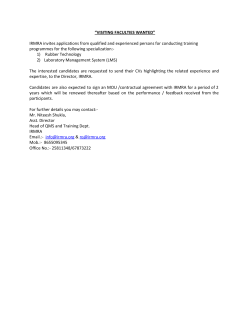

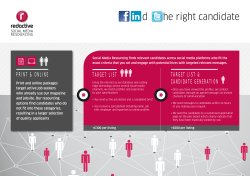
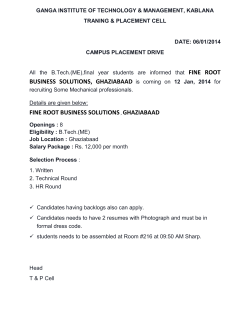

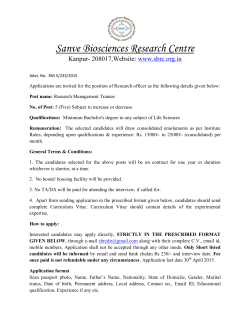
![Dear [Candidate]: Thank you for your willingness to stand for](http://cdn1.abcdocz.com/store/data/001026053_1-7f0c5dc0a9066cdd4178856527c082aa-250x500.png)

